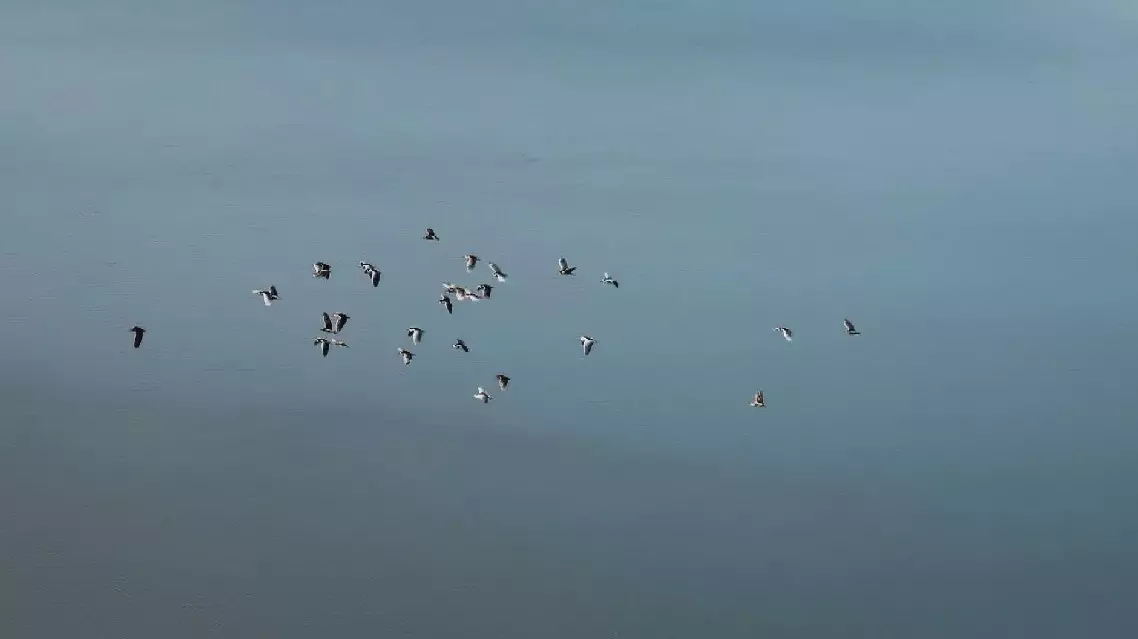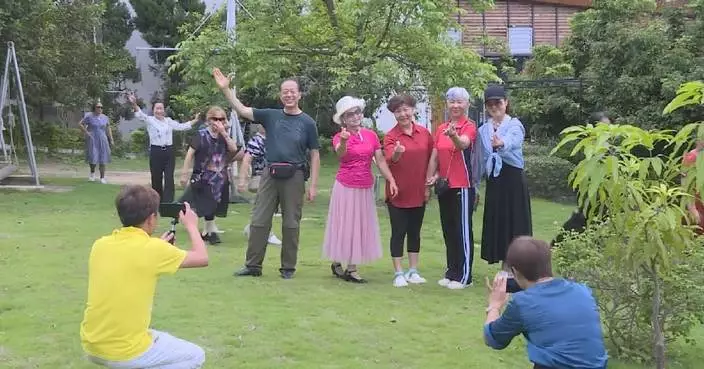A CCTV documentary shows the efforts and achievements of the people in Xinjiang's Taklamakan Desert in desert control and tree planting through comparison of satellite images spanning 10 years.
Over the past decade, people of all ethnic groups have laid 33,680 hectares of grass grids in the Taklamakan Desert. A total of 11,840 square kilometers of artificial afforestation have been completed, and 2 billion trees have been planted.
Qiemo County is a small town surrounded by desert with a population of over 70,000. The desert here once approached the city at a speed of three to five meters per year.
Over the past decade, changes have continued to occur. People in the county have laid over 6,200 hectares of grass grids in the desert, equivalent to more than 8,700 standard football fields.
The satellite images released in the documentary shows that in 2014, the county was desolate covered with desert; ten years later, it is almost covered with green.
Due to the terrain, the sandstorms in Qiemo moves from east to west all the way to Minfeng County in Hotan Prefecture. In recent years, more than 40,000 people in Minfeng County have planted over 3,700 hectares of trees in the Taklamakan Desert, built 1,600 hectares of farmland shelter belts, and planted 10.656 million plants for sand control.
Another area severely affected by sandstorms in Hotan is Yutian County. In the process of fighting against sandstorms, the local people have developed their unique model of sand control - growing plants such as haloxylon ammodendron and tamarix tamarisk in terraced fields.
Cele County, west of Yutian, is the most severely affected area in Hotan by wind and sand. In recent years, local people have taken the initiative to join the team of sand control, and have planted 21.4828 million trees and 164,500 mu of cash crops such as walnuts and red dates in the desert.
In 1986, the forest coverage rate of Kekeya, a small town in Aksu Prefecture, was only 8 percent, but now it has reached an astonishing 73 percent. So far, nearly 4 million people in Aksu have participated in voluntary tree planting.

Satellite images show people's efforts, achievements in desert control in Xinjiang
Islands in the rivers flowing through Qingdao City of east China’s Shandong Province have been transformed into a winter sanctuary for various bird species, thanks to dedicated conservation efforts.
Located at the confluence of the Baisha River, the main waterway of Chengyang District in northern Qingdao, and Jiaozhou Bay, the 11 islands have become a crucial stopover for over 160 species of migratory birds each winter.
Collectively known as "Youth Heron Island," the islands lie along a key migratory route, offering clear waters, lush shores, and abundant food for migratory birds.
Seven years ago, however, the ecological conditions there were unsuitable for birds. In early 2018, the newly established Qingdao Chengyang District Wildlife Conservation Association, in collaboration with local authorities, began restoring the ecosystem, including planting trees on the islands.
"All the saplings had to be transported to the islands by boat, and the planting holes had to be dug by hand with a pickaxe - no machinery was allowed," said Xu Liqiang, secretary general of the association.
The restoration was not without setbacks. At the beginning, inexperienced staff planted fast-growing tree species that were unsuitable for the islands' salty, alkaline soil, resulting in the loss of 600 saplings.
Learning from these mistakes, the team consulted experts and replanted saline-alkali tolerant varieties. Aside from environmental challenges, local resistance, especially from the elderly who were prohibited from clearing land for farming on the islands, added complexity to the project.
"We engaged with local schools to raise awareness through education. We involved students who then influenced their grandparents, helping unite the community around the restoration effort," said Xu.
By 2020, the islands began to flourish - vegetation grew, the water quality improved, and, most importantly, the first migratory birds arrived.
"When we recorded over 30 grey herons wintering on the first restored island, many of us were so moved that we cried. The restoration of all 11 islands was the result of young people working together, which is why we named them 'Youth Heron Islands'," Xu explained.

Ecologically transformed islands become haven for migratory birds










